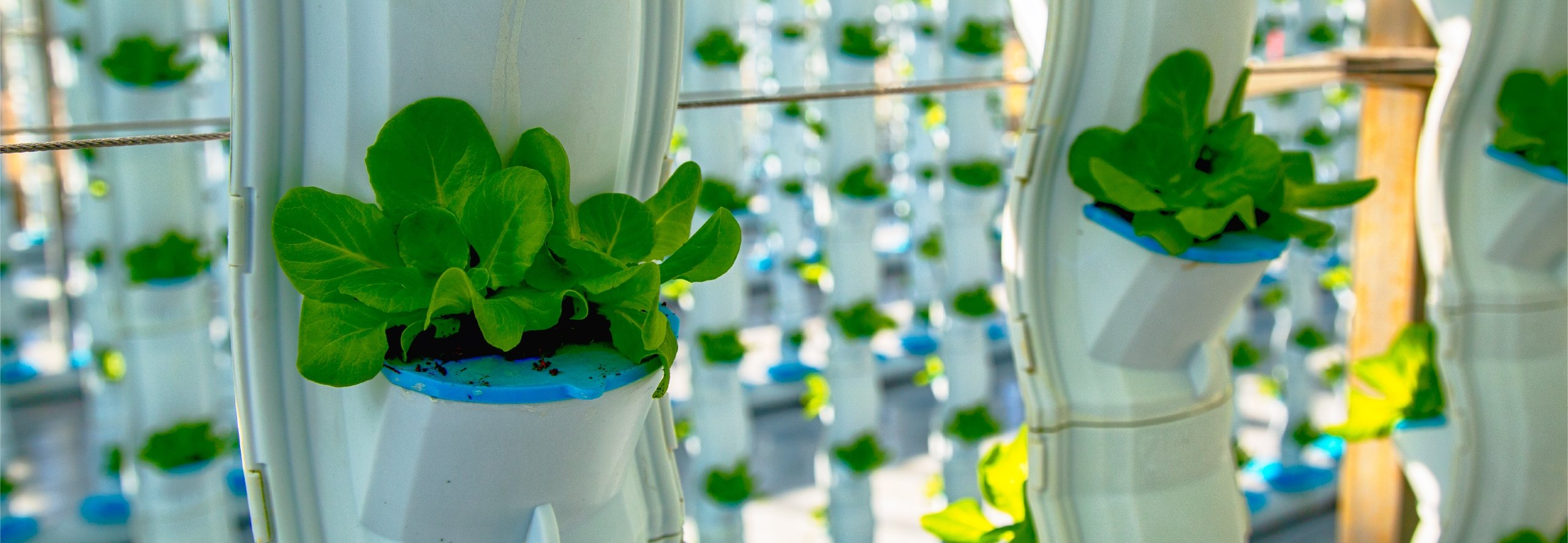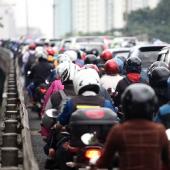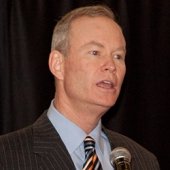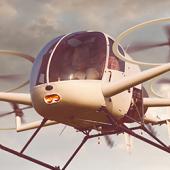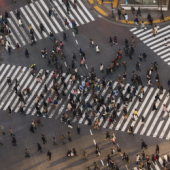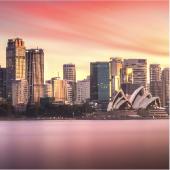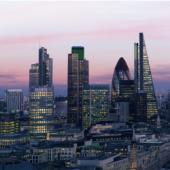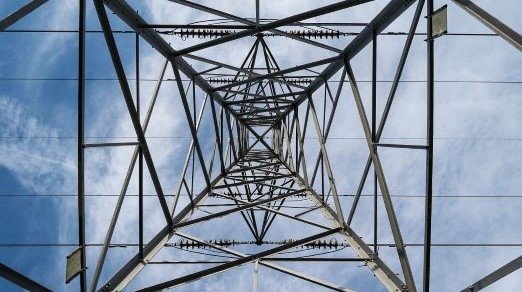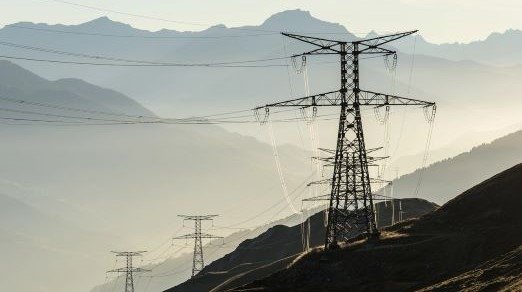Sustainability and the city: Reinventing the future with high-tech and low-tech solutions
IN BRIEF
- Known as the “The Gig,” Chatanooga boasts the fastest connection speeds in the United States, attracting startups and gig workers from as far away as San Francisco and New York.
- Some of the most creative ideas to reinvigorate cities and make them more sustainable are emerging from Africa, the Middle East, and Asia.
- Nearly 30% of the time people spent driving in downtown areas was to look for a parking spot; autonomous and connected vehicles will change that.
When it comes to our love of cities, there’s both good news and bad news: Cities have the distinction of being both engines of economic growth and the main culprits behind climate change and economic inequality. While cities occupy less than 2% of the world’s land surface, they are home to 60% of the population and nearly 80% of the carbon emissions, according to the UN. They contain deep pockets of poverty, a diverse middle class and a sliver of extremely wealthy individuals. The COVID-19 pandemic has exacerbated the trend towards economic inequality, but it also provides an opportunity to reinvent cities as we know them through both high-tech and low-tech initiatives.
For centuries, cities have been the fundamental nodes of economic activity and social life. They are hubs of talent, creativity, and dynamism. As Columbia University’s Saskia Sassen has noted, “cities do the work of globalization.” They are a repository of talent and vibrancy. No wonder that so many startups and established companies strive to tap into their seemingly inexhaustible dynamism. But for all the good they bring; cities are failing us in at least two ways. Many of them continue to reel from the long-term consequences of manufacturing flight. Vast swaths of American and European cityscapes are derelict wastelands full of despair. As a result, nearly every major city is “in fact, divided into two, one the city of the poor, the other of the rich,” as the Greek philosopher Plato once said.
"Pardon Me Boys… Is That ‘The Gig’ in Chattanooga?"
But post-industrial decline is not necessarily destiny. Consider Chattanooga, Tennessee, the city immortalized by Glenn Miller and His Orchestra in 1941. At the time, this city of 129,000 was home to prosperous textile, furniture, and metal-working factories. All southbound trains made a stop there. By the late 1950s, manufacturing was leaving elsewhere, and middle-class white families headed for the suburbs.
In 1969 the Federal Government determined that Chattanooga had the “dirtiest air of any city in the United States,” even after half of the city’s factories had shut down. The local government immediately instituted air quality targets and regulations, and businesses invested heavily in green energy.
It took three decades for local philanthropists and politicians to join forces with the aim of revitalizing the downtown area. The only possible strategy involved creating the conditions for such service activities as tourism, high-tech, healthcare, finance, and insurance to grow.
During the 1990s it was one of just 18 American cities to gain residents. This turnaround attracted a major investment by Volkswagen in 2008. Encouraged by these early successes, local government, business, and civic leaders decided in 2009 to think big by investing in a citywide gigabit-per-second fiber Internet network, the first in any American city (even today, fewer than 200 have been built). Known as “The Gig,” it boasts the fastest connection speeds in the country, a move that attracted numerous startups and gig workers from as far away as San Francisco and New York City, including telecommunications companies, healthcare equipment manufacturers, robotics designers, and 3D-printing pioneers.
The Environmental Protection Agency proposed the city as a national model to emulate. Since 2013 the city has cut energy use by 30%, propelling it to the top spot of the Department of Energy’s Better Buildings Challenge. Volkswagen, the local airport, and BlueCross BlueShield of Tennessee now generate more than 15 megawatts of solar electricity, equivalent to the consumption of 10,000 homes, or one in seven in the city.
30%↓
Since 2013, Chattanooga has reduced its energy use by 30%
But not all cities share Chattanooga’s success. The vast majority of cities struggle to meet expectations when it comes to sustainability.
Cities are much more energy-intensive than rural areas and urban residents much more wasteful. They are growing at the whopping rate of 1.5 million people per week worldwide. Simply put, there is no solution to the problem of environmental degradation and climate change unless cities become more sustainable.
Demographically speaking, the slowdown in the world’s population growth means that there is hope for a more sustainable planet. But the decline in the number of babies coincides with a swift expansion of the urban middle-class consumers, especially in Asia and increasingly in Sub-Saharan Africa. Every year, nearly 200 million people join the ranks of the middle class globally, resulting in more people engaged in a protein-rich diet, homes with air conditioning, automobiles, vacations, and other resource-intensive consumption patterns. Most of the world’s middle class lives in cities, and that is especially true in the case of the new middle class in emerging markets, where the concept of suburban life has yet to gain in acceptance.
Urban Agriculture in EMEA
It may seem paradoxical that, while most urban growth is occurring in the developing world (from Lagos and Nairobi to Dhaka and Jakarta), some of the most creative ideas to reinvigorate cities and make them more sustainable are also emerging from Africa, the Middle East, and Asia. Perhaps the best example involves urban agriculture. There are multiple benefits to growing food in the city, including reduced carbon emissions, improved air quality, and transportation savings. World War II’s “victory gardens” are back, with a vengeance.
Urban farming comes in two kinds, horizontal and vertical. “Food is now been grown in such unlikely places as old factories, abandoned warehouses, and industrial buildings,” says Ravindra Krishnamurthy, an expert on vertical agriculture. “Technological advances in vertical farming methods and indoor lighting is enabling to grow food alongside existing commercial and residential structures and making local food available for city dwellers.” Jack Ng built Sky Greens, one of the world’s first large and commercially viable vertical farms in Singapore. He grows vegetables like lettuce and spinach in A-shaped towers soaring 30 feet, with 38 tiers of growing troughs which rotate at a rate of one millimeter per second, “Which ensures uniform distribution of sunlight, proper air circulation and irrigation for all plants.” The true breakthrough lies in the efficient use of resources. Each tower needs only as much energy as a 40-watt light bulb. The water is recycled, filtered, and recirculated. All organic waste is composted and reused.
Vertical agriculture has the potential of revitalizing cities in decline. “Entrepreneurs are taking advantage of inexpensive former warehouses and factories in Detroit and transforming them for agricultural use to produce local foods,” reports The Detroit News. For instance, “Green Collar Foods mists the bare roots of kale, cilantro and peppers using an aeroponics system under fluorescent lights in its 400-square-foot plastic-encased greenhouse. The system is built vertically, stacking plants on shelves to grow above each other.” Jeff Adams launched Artesian Farms in 2015 at a 7,500-square-foot vacant warehouse. He uses twenty times less water to grow a bundle of lettuce than his California competitors. Most importantly, vertical agriculture in cities promises to reduce the carbon emissions involved in transportation and to shorten delivery times. “The food you’re eating right now, its seven to 10 days before it reaches Michigan,” Adams notes. His produce “is from here to the market in a day, at most, 48 hours... It’s going to be much more flavorful and much more nutritional.”
Urban horizontal agriculture will be crucial for meeting the needs of the rapidly growing cities of Africa, where transportation from the countryside represents a key bottleneck in the supply chain. For instance, city officials in Kampala and Nairobi, the capitals of Uganda and Kenya, respectively, have encouraged agricultural activities for years, with varying degrees of success. Some studies indicate that already “800 million people are engaged in urban agriculture worldwide, producing 15 percent to 20 percent of the world’s food.” They’re mostly in the developing world. In Africa, as many as 35 to 40 million people receive their food mainly from urban farms.
There’s also a low-tech and horizontal version of urban agriculture, as practiced in Sub-Saharan Africa, where 30% of the food is grown within the limits of major urban areas. Given the poor transportation infrastructure, the main advantage of urban produce farming lies in being able to reach the consumer without delay. Farming inside a shipping container is the latest trend. It allows for careful control of temperature and humidity and is much more efficient in the use of water than open-air agriculture. Solar panels can provide the energy needed in a part of the world where the electricity supply is unreliable or non-existent.
-------
Cities can become the solution to the problems of inequality, waste, and climate change, as opposed to the problem itself. Cities are the future more so than at any other moment in history, for better or worse.
Cities can become the solution to the problems of inequality, waste, and climate change, as opposed to the problem itself. Cities are the future more so than at any other moment in history, for better or worse.



